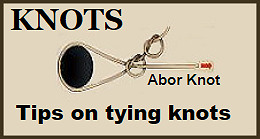The Backcountry Press
The country's premier daily hunting, fishing & outdoor news in the USA, Canada and more. Read whats happening in your neck of the woods & beyond. Choose your language above and read our news in English, Deutsche, Espanol, Francese, Irish or Italiano
The Backcountry Outdoor News reports the latest hunting and, fishing news along with fishing derbies and tournaments
from:
| ||||||
| ||||||
|
Whether an event is for freshwater, saltwater, open water or ice fishing, they are listed in our directory.
HUNTING NEWS CATEGORIES
© 2010 Backcountry Press Outdoor News - All Rights Reserved Website Design by:
Connect With Us
 | ||||
Hunter-Safety: How Cotton Can Actually Help You in a Survival Situation
Submitted by: Backcountry Press Outdoor News
Posted on: 01/08/19
Disclaimer: The views expressed on this site are that of the authors and not necessarily that of TBC Press
 | ||||
Diehard outdoor enthusiasts often have a love/hate relationship with cotton. While it has many uses, winter clothing shouldn’t be among them.
This is due to the fact that cotton holds moisture much longer than other fabrics, thereby wicking away precious body heat instead of moisture. Good to remember when getting dressed, but cotton isn’t all bad.
When applied to the right task, this fiber can start a fire, light our way, and help us acquire meat in a survival setting. Skip the cotton clothing in cold weather and instead, use this age-old fiber to help you survive.
1. Burn As Tinder
Cotton balls are one of those everyday household items that a far more useful than they would appear. Typically used in the home to remove make up and nail polish, these fluffy little bundles of fiber can perform many tasks in a survival situation.
The thing I use them for the most is tinder. Dry cotton balls right out of the bag can be torn apart a little and used as tinder for ferrocerium rods and any other ignition source. These don’t last long when dry, but if you add additional fuel, you may get a 4- or 5-minute burn. This extra fuel could be petroleum jelly, cooking oil, melted wax, bacon fat, or some other oily, waxy, or resinous material.
2. Apply Your Meds
Cotton is great at soaking up blood, but it can also dispense liquids. Load up a cotton ball or gauze pad with a needed medicinal liquid and strap it over the affected spot with a bandage or gauze for extended delivery of medicinal goodness. This is a great way to deliver tannic acid to an ingrown toenail or boil. It’s also handy when keeping medicines on rashes and infections.
Add a few drops of oil of cloves to a small piece of cotton ball and place it in a dental cavity or next to your gum line for a toothache. You can also use a mass of cold, wet cotton material in a plastic bag to create a cooling compress.
3. Filter Water
Getting the mud, sediment, and debris out of your water can make a big difference in water disinfection. These extra bits of flotsam and jetsam will mercilessly clog commercially available water filters and absorb disinfection chemicals before they can do their job making the water safe to drink.
Thankfully, cotton can come to the rescue here. Cut the bottom out of a small water bottle and take the cap off. Pack the cavity with cotton balls, tightly woven gauze or cloth. Pour your dirty water in the larger end of the bottle (so it acts like a funnel). The cotton fibers will grab some of the filth and cleaner water will emerge from the other side. It’s still not safe to drink, but the water is in better shape to process further.
4. Make a Torch
Ever wonder how they make those cool torches you see in movies? This isn’t it, but it works just the same. Cut a stick 3 feet long from green wood, ideally with a fork at the end. (Use green wood so your handle won’t catch fire.) Use a bit of thin wire to wind a fistful of cotton balls onto the forked end of the stick.
Spread them around and secure them tightly, so that the wad of white fiber looks like a giant Q-tip. Soak the cotton head in cooking oil for 30 seconds, allow it to drain for another 30 seconds, then light it with an open flame. The torch will begin to burn and you’ll have enough light to read in the darkness. Be aware that flaming cotton balls may drop out as they shrink from burning, so only use this in an area with no risk of fire.
5. Build a Dart
The darts for your blowgun can be made from a variety of materials. Black locust wood has been a dart choice for small game hunting for centuries due to its strength and heavy weight. Whatever type of dart shaft you choose, you’ll need a fletching at the end. This stabilizes the dart’s flight, and it acts as a gasket to make a seal for air to propel the dart.
Thistle down and rabbit fur are traditional choices, but cotton balls work, too. Using thread about the diameter of dental floss (or dental floss), tie a knot around your dart about 2 inches from the end of the shaft. Begin spinning the dart and stuffing shredded cotton ball material under the thread wrappings. Tie or glue the end. There is a lot of technique involved in this skill, so practice and be patient.
6. Hold a Scent
Has your family ever complained about your stinky socks? Scent can be a powerful entity, and when it comes to hunting, trapping, and gardening – cotton can hold onto a lot of it. Scent can lure or repel, based on the odor and a creature’s reaction to it. You could drip bug-repelling oils into some cotton and hang them around your vegetable plants with small paper clips.
You could also add an enticing scent to cotton and use it to lure game animals into a trap. You can even affix cotton to your electric fence and drip vanilla extract on it. When deer and other garden destroyers come to sniff the interesting aroma, they get zapped right on the nose by the fence wire. However you use cotton to hold and convey scent, keep in mind that scent wears off, and you’ll need to reapply after a rain or every few days in drier weather.
7. Poison Your Pests
In a grid-down setting, you’ll have to be your own pest-control expert. Once the last can of Raid has been sprayed, you’ll have to use another approach to control roaches, ants, and other household insect pests. Luckily, some sugar and borax (a traditional laundry additive) will kill those little buggers without filling your home with poison. Mix a tablespoon of white sugar and a teaspoon of borax with just enough warm water so that the granules dissolve. Soak a cotton ball in this solution and then set the sticky cotton ball on a piece of wax paper in an area that the insects frequent. This will really draw the creatures and each one that feeds on your sweet treat will soon die.
8. Form a Wick
Our cave-dwelling ancestors once used fluffy seed down from cattails as a lamp wick material. We can borrow this idea and use a more contemporary material for a similar purpose. In a dish of oil (edible or not), place one or more cotton balls so they are partially submerged in the oil. Light the top of the greasy cotton with an open flame and it will begin to burn like a candle wick. Going a step further, you can roll and twist a cotton ball until it becomes elongated and resembles a fat piece of cordage material. Use this as an oil lamp wick, or even stick it in a container of melted wax to become a proper candle wick.
Article and Images courtesy of https://www.outdoorlife.com/
# # # # #

















